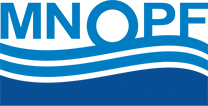Investment aims and journey plan
What is the journey plan?
The journey plan is the strategy framework, first developed by the Trustee in 2008, to help the MNOPF achieve its objectives. It relates to the defined benefit parts (Old and New Sections) of the MNOPF – in other words, those benefits earned by members between 1938 and March 2016. It shows how the Trustee sees the funding position of the DB sections of the MNOPF develop over time and provides a foundation for the investment strategy and investment decisions.
The Old Section
In 2008, the MNOPF Old Section was in deficit. This means that there was not enough funding within the MNOPF to pay its future pension obligations to members and dependants. In fact, it was only 80% funded. In addition, the Old Section’s ability to raise further funding from sponsoring employers was very limited.
To help improve the MNOPF’s performance with the highest levels of governance, the MNOPF established an industry-leading investment governance structure. This resulted in the appointment of a Delegated Chief Investment Officer (DCIO) – Willis Towers Watson.
With the appointment of the DCIO and funding levels once again improving, the Trustee embarked on a series of innovative buy-ins over the next four years and, once the Old Section was out of deficit, a buy-out took place. These actions secured the whole of the Old Section benefits with two insurers, Rothesay Life and Legal & General. Once the benefits of the 40,000 members in the Old Section were 100% secured, the Trustee was able to wind up the Old Section of the MNOPF.
The New Section
At the March 2012 actuarial valuation, the New Section was less than 70% funded. The overriding objective of the journey plan was clear – to make sure that the MNOPF was in a position to pay all the benefits promised to its members now, and in the future. But how could this be achieved? What level of funding did the Trustee want to achieve and by when? The Trustee needed to design a plan – the journey plan - to achieve this objective.
The Trustee reviews the journey plan from time to time to ensure it remains appropriate. The current journey plan objective is for the MNOPF to secure at least 103% of member benefits by between 30 June 2024 and 30 June 2026.
The journey plan is made up of three key elements:
- To improve investment returns
- To reduce risk
- To collect the deficit payments owed by employers
Improve investment returns
Fundamental to achieving the MNOPF’s investment strategy, and therefore meeting the journey plan, is a careful balance of risk and reward. The Delegated Chief Investment Officer (DCIO) structure allows for a wide diversification of investments and investment managers, which is designed to provide the required investment returns, but with lower risk compared to other investment approaches used by other pension funds.
Reduce risk
Many UK defined benefit pension funds, like the MNOPF, are trying to reduce the risk of not being able to pay members benefits in the future. The risks that impact the MNOPF include:
- The risk of pensioners living longer than they used to and, therefore, the MNOPF paying their pensions for longer (the longevity risk)
- The risk of the assets of the MNOPF decreasing in value in volatile markets (the investment risk)
- The risk that where deficit contributions have to be collected, employers are not able to meet their payments (employer covenant risk)
The investment structure set up by the DCIO means that the returns required to meet the journey plan can be achieved with lower risk and the investment portfolio is structured so that it is able to respond quickly when market conditions and funding levels improve.
Collect deficit contributions
The collection of deficit payments from participating employers continues to be a priority for the MNOPF Trustee. Considerable time and resources are invested to work with employers to make sure deficit contributions are collected in a timely and efficient way. To reduce the covenant risk, we provide employers with the opportunity to agree payment options reflecting their financial strength and, where necessary, security arrangements are provided by the employers to give us more assurance in respect of uncollected amounts. The Trustee ensures that the collection of deficit contributions is fair and consistent for all participating employers. Greater certainty about the receipt of contributions means we can implement a robust long-term investment strategy.
You can find out more about the progress the MNOPF is making on the journey plan in the latest copy of The Beacon member newsletter here .

